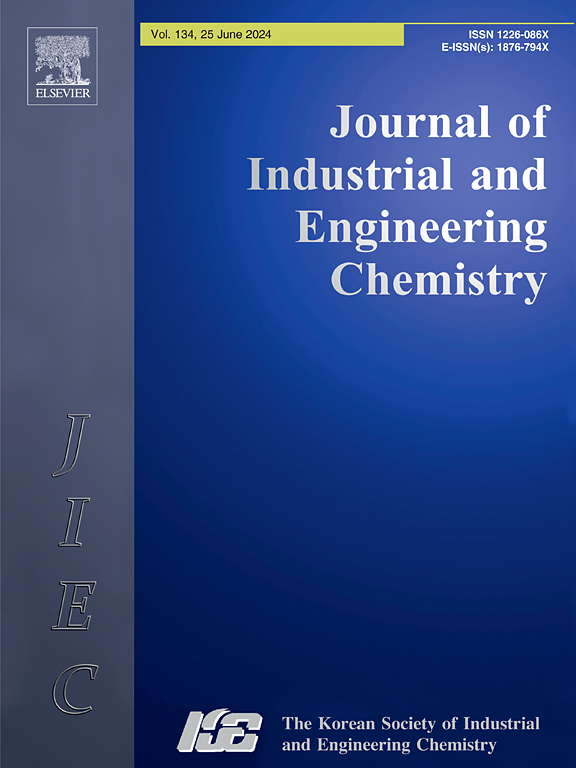Green synthesis of silver nanoparticles on polyamide fabrics using Scrophularia striata Boiss extract: Characterization, dyeing, and antibacterial properties
IF 5.9
3区 工程技术
Q1 CHEMISTRY, MULTIDISCIPLINARY
Journal of Industrial and Engineering Chemistry
Pub Date : 2024-11-07
DOI:10.1016/j.jiec.2024.10.069
引用次数: 0
Abstract
The green synthesis of silver nanoparticles (Ag NPs) on textiles using natural extracts is emerging as an innovative, eco-friendly approach for enhancing both antibacterial properties and dyeing performance. This study introduces a novel in-situ method for synthesizing Ag NPs directly on polyamide (PA) fabrics, utilizing Scrophularia striata Boiss extract (SBE) as a natural dye and reducing agent. UV–visible spectroscopy and dynamic light scattering (DLS) were used to characterize the synthesis process and determine the average particle size of Ag NPs. The data showed particle sizes of 62.5 nm and 56.1 nm when using flower and stem extracts, respectively. Surface morphology findings from scanning electron microscopy (SEM) and corresponding diffraction peaks in X-ray diffraction (XRD) confirmed the in-situ formation of Ag NPs on the surface of PA fabric. Fabrics dyed with SBE and Ag NPs exhibited higher color strength (K/S values of 4.1 and 5.6 for flower and stem, respectively), showing 64 % and 100 % increases compared to samples without silver. Additionally, PA fabrics exhibited 100 % inhibition against E. coli and S. aureus bacteria. After 10 washing cycles, antibacterial activity was maintained at 88 % and 85 % for the stem extract and 83 % and 79 % for the flower extract. This research highlights the novel integration of natural dye and nanoparticle synthesis, providing a sustainable route for multifunctional textile development.

求助全文
约1分钟内获得全文
求助全文
来源期刊
CiteScore
10.40
自引率
6.60%
发文量
639
审稿时长
29 days
期刊介绍:
Journal of Industrial and Engineering Chemistry is published monthly in English by the Korean Society of Industrial and Engineering Chemistry. JIEC brings together multidisciplinary interests in one journal and is to disseminate information on all aspects of research and development in industrial and engineering chemistry. Contributions in the form of research articles, short communications, notes and reviews are considered for publication. The editors welcome original contributions that have not been and are not to be published elsewhere. Instruction to authors and a manuscript submissions form are printed at the end of each issue. Bulk reprints of individual articles can be ordered. This publication is partially supported by Korea Research Foundation and the Korean Federation of Science and Technology Societies.

 求助内容:
求助内容: 应助结果提醒方式:
应助结果提醒方式:


